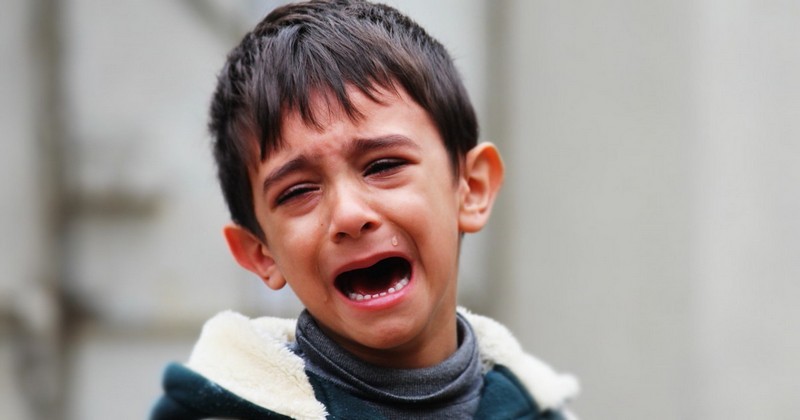The insecure child: causes, signs and symptoms.

Learn how to detect the symptoms of insecurity in your child and how to help him/her.
We are immersed in our environment. From a very young age, we interact with our environment in a continuous reciprocal continuous reciprocal transactionIn such a way that the slightest maladjustment can lead to anguish as a response to it, as a rebalancing mechanism, or to some degree of somatization in the form of indisposition, difficulty in falling asleep and other psychophysiological effects.
The insecure child
Particularly vulnerable to these imbalances with the environment are children under six years of age. children under six years of age.
Their whole universe is in the domestic circle, which absorbs multiple external influences, for this reason the child is continuously exposed to the pressure and peculiarities of the social environment in general and of the family nucleus in particular.. Under certain conditions, the syndrome of the insecure child may appear.
Causes of insecurity in childhood
Serious imbalances in their environment, such as the death of parents, generate anxiety, sadness and can worsen into severe depression and painful experiences of insecurity.
Other seemingly minor changes such as moving house, a lost pet, etc., can cause the same symptoms. At this young age, routine offers security, so situations that upset this balance are situations that break this balance are experienced as a danger, creating dissociation and anxiety symptoms..
Some strategies to educate your child healthily: "10 strategies to improve your child's self-esteem".
What is the transitional object?
The transitional object is usually a doll, a blanket, a cushion, a pacifier, a pacifieretc., which reminds the child of and symbolizes his familiar environment. When, due to circumstances, the child has to face a change of residence, the transitional object acts as an insurance tool, strengthened by the magical thinking inherent to children, preventing the alteration of their vital environment from being excessive and the feelings of insecurity and fear from becoming unbearable.
What does the object of possession reveal about the child?
It is an element of approval and acceptance of the new environment. It signifies positivity and good receptivity to the new context. The child and the transitional object revolve on the basis of insecurity. The device of the transitional object lies in the spatio-temporal alteration, such that the domestic atmosphere is migrated to another location, however, the object of possession is a rewarding object "per se" since its very essence is especially positive for the child. It is a companion of affirmation to face new horizons.
Most common signs and symptoms of the insecure child
The experience of insecurity causes a regression to earlier stages of development. Some of the signs that we can observe in an insecure child are:
- Disturbances in hygiene-related behavior in general and maternal dependence to perform it. The insecure child tends to delegate hygiene to the mother.
- Affective behavioral changesEmotional instability, disobedience, behavioral and physical aggressiveness towards other children, breaking of play items. Sometimes, the insecure child presents the opposite symptomatology: shy, insecure, taciturn, passive.
- Changes in motor behaviorChanges in motor behavior: recession in the evolution of movement, cessation of bipedal position, crawling, crawling, request to be carried, regression in the ability to draw. Distortions in gait when moving, illogical gestures are also observed in the insecure child.
- Behavioral modifications when playingThey practice under-age roles, too much repetition of the same game or fear.
- Affective behavioral disturbancesDemands to be there for him/her, crying, continual questioning about things he/she already knows, irrational fears.
- Behavioral changes in feedingLong chewing, primary gulping, clicking when chewing, flatulence, decline in basic skills such as the use of spoon and fork, bad manners, selective repudiation, vomiting and reluctance.
- Presence of coercive behaviors in masturbation.
- Behavioral sleep modificationsRestlessness, sleep talking (somniloquy), night terrors, frequent interruptions of sleep with crying to parents and requesting to leave a light on, requesting to leave the door open and asking parents to be with him until he falls asleep, opposition to going to bed, requesting to be told a story with physical contact and resisting falling asleep.
- Decrease in school productivityProblems of concentration in studies.
- Difficulties in body and oral expressionDifficulties in corporal and oral expression: eccentric grimaces and gestures, mocking or tragic stumbling language.
Bibliographical references:
- Branden, N. The six pillars of self-esteem. Temas de Hoy, 2001.
- Garber, S., Garber, M. and Spizman, R. Behaving well. Practical solutions to common childhood problems. Medici, 1993.
- Vasta, R., Marshall, M. and Scott, M. Psicología infantil. Ariel, 1996.
(Updated at Apr 13 / 2024)